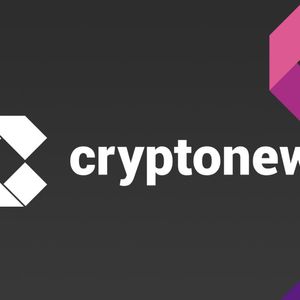Ethereum activated its long-awaited “Pectra” upgrade on Wednesday, marking the blockchain’s most significant overhaul since the Merge in 2022. The update aims to streamline staking, enhance wallet functionality, and improve overall efficiency. It arrives as Ethereum contends with rising competition and internal debates over its direction. The Pectra upgrade, a " hard fork " in blockchain parlance, was triggered at 10:05 UTC and finalized around 13 minutes later. A key element of the upgrade involves increasing the amount of ETH one can stake from 32 to 2,048. This change could help speed up and streamline operations for stakers, the vast network of companies and individuals who help keep the Ethereum network afloat. Previously, staking at scale required setting up multiple validators; now, stakers can consolidate up to that amount under a single node. The upgrade, considered to be Ethereum's biggest since the 2022 Merge to proof-of-stake , comes at a delicate moment for the ecosystem. It follows two failed test runs , one of which put a key Ethereum test network permanently out of commission . Additionally, Ethereum, the network that introduced smart contracts and blockchain-based decentralized applications, has steadily lost market share to more nimble competitors in recent months. Solana, in particular, has attracted more new developers over the last year than Ethereum, which was long considered the dominant non-Bitcoin blockchain. The Ethereum community has debated whether its unofficial leader — the non-profit Ethereum Foundation — is to blame for the lagging price of the ETH token, and the perception within the industry that the network lacks a cohesive vision. In response, the Swiss foundation introduced new leadership and a fresh set of plans to reinvigorate the chain's developer community. Relief for staking providers Central to the upgrade is EIP-7251, which increases the maximum amount validators can stake from 32 to 2,048 ETH. The change is intended to assist staking institutions and infrastructure providers by addressing the needs of validators who stake ETH to keep the chain operational. If you want to invest more than 32 ETH with the network, you must divide your stake among dozens—or sometimes, hundreds—of separate nodes. This not only consumes time and incurs costs, but it has also resulted in weeks-long lines for new nodes to join the network. By upping the staking limit, "This means that small operators can compound their stake directly, while large ones can consolidate validators to reduce bandwidth use on the p2p network,” wrote Tim Beiko, the protocol support lead at the Ethereum Foundation, over X . Account Abstraction Another core component of the hard fork, EIP-7702, would allow crypto wallets to temporarily function as smart contracts . This change brings the Ethereum network closer to account abstraction , a series of features that pave the way for more user-friendly crypto wallets. Users could, for instance, pay transaction fees in stablecoins instead of ETH, set up an automatic payments system, or introduce recovery access to wallets if they forget their seed phrases. What else is in Pectra? While EIP-7251 and EIP-7702 are the main focuses of Pectra, nine other Ethereum Improvement Proposals (EIPs) have made it into the package, mostly affecting staking providers, validators, and developers: EIP-2537: Introduces a function to the network that makes certain cryptographic operations faster and more efficient, which could benefit privacy tools. EIP-2935: Stores more past block information on the blockchain, making it easier to verify that data. EIP-6110: Makes the process for new validators to join less complex by handling their staking deposits more directly within the system. EIP-7002: Allows validators to initiate withdrawals of their funds directly, improving security and user experience for staking services. EIP-7549: Optimizes how the blockchain processes validator votes. EIP-7623 : Increase the costs of calldata, which is used for data availability (DA). EIP-7685: Establishes a standardized way to communicate requests between the execution layer and consensus layer. EIP-7691: Increases the blockchain’s capacity to handle more data blobs per block. EIP-7840: Introduces a configurable setting for managing how much data Ethereum can handle per block. Read more: Ethereum Preps for Biggest Code Change Since the Merge With Pectra Upgrade UPDATE (10:22 UTC): Updates to state that Pectra upgrade has finalized.

















